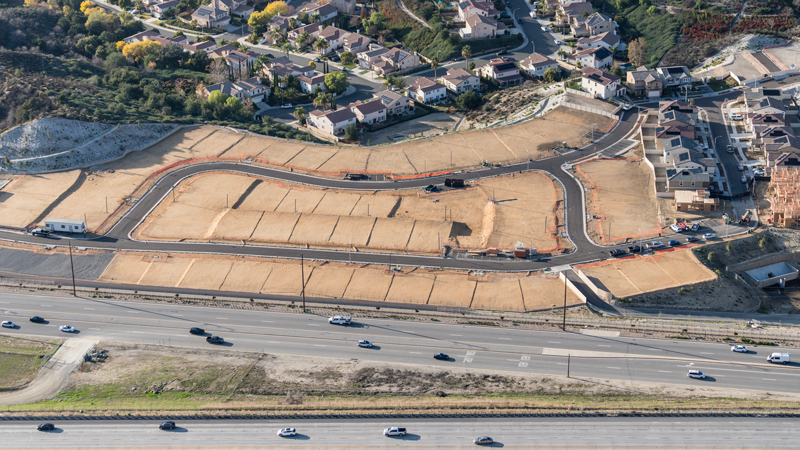Blogpost
3.9 minute read
December 28, 2020
The clock is ticking for jurisdictions across California as deadlines approach for revising their General Plan Housing Elements. Laws governing Housing Elements have been around since 1969, but there’s far more at stake now. The updating process has become more difficult and complex, and jurisdictions need to prepare themselves accordingly.
Here’s a brief overview: Housing Element updates show how and where jurisdictions will accommodate new housing units in compliance with the Regional Housing Needs Allocation (RHNA). California updates housing elements in five- or eight-year cycles and require certification from the state and the Department of Housing and Community Development (HCD).
These approvals have long been perfunctory, but recent legislation, including AB 101, increased scrutiny around compliance and gave teeth to enforcement. The California Attorney General will now pursue lawsuits and levy fines, among other punitive actions, against cities and counties that fail to comply with their housing element mandates or discourage development. Additionally, HCD can now cite non-compliance violations before the end of a housing element cycle.
Moreover, jurisdictions must also provide annual reports showing housing unit development progress, including addresses and parcel numbers for every housing site.
Here are the top issues related to housing element revisions that all California jurisdictions with upcoming deadlines must take into account:
- An increase in volume: HCD allocations are on the rise as the state seeks to address California’s housing shortage. Certain jurisdictions, particularly coastal cities, have received RHNA allocations calling two to three times more housing units as prescribed in previous updates. When jurisdictions lack sufficient land zoned at the appropriate densities to accommodate the increase, this is an uphill battle.
- New and expanded Housing Element requirements: Legal changes now require that all Housing Elements affirmatively further fair housing to provide inclusivity and opportunities. Sites for planned units identified in the Housing Element are subject to size limits, stricter definitions of “vacant” and “capacity, and limits on reusing sites identified in previous Housing Elements. The way these sites are reported has also changed with HCD requiring a detailed template. Additionally, there is a “No Net Loss” requirement that unit capacity for specific income levels must be maintained over the eight-year period (important if housing developed on a site has less units than identified in the Housing Element).
- A chain reaction of revisions: In our experience, many jurisdictions are unaware that housing element updates are just the beginning. These updates often require corresponding revisions to the land use element of the General Plan. Land use element updates then trigger the need to revise the safety element, per SB 379, and the environmental justice element for disadvantaged communities, per SB 1000. These additional updates need to be taken into consideration for cost and time implications to get these updates complete.
- A more comprehensive environmental focus: Municipalities previously provided simple, quick, and relatively inexpensive CEQA documentation with their housing element revisions. Now, they will need more effort, expense, and time to complete an Environmental Impact Report (EIR), which involves public outreach and commenting periods. If an existing EIR is recent, jurisdictions may be able to streamline the process—and save money— by submitting a CEQA analysis for upcoming projects.
- Timing: Jurisdictions in southern California with 2021 and 2022 deadlines should be starting their housing element update process now. A typical housing element update, when considering the other requisite updates necessary, takes approximately 12-18 months to complete. To compound this, work on the EIR as part of the General Plan update cannot begin until after a draft housing element is in place.
Now for the Good News
Yes, the new housing element update procedures are likely more time consuming and comprehensive compared to years past due to legal changes, but state money is available to ease the pain.
Jurisdictions can apply for Local Early Action Planning (LEAP) grants from HCD up until January 31, 2021 (the State encourages cities to apply before the deadline). These one-time allotments help cities and counties cover the costs of updating the elements of their General Plan, including consultant fees, and improve the processes that accelerate housing production.
The grants are non-competitive—anyone meeting the requirements on the application has a very good chance of receiving the full amount, which varies based on population. The State has enough set-aside funding for all cities and counties.
If you have questions or would like assistance with updating the elements of your General Plan in accordance with the newest laws and requirements, please contact Harris experts Dima Galkin or Diane Sandman, AICP. They can answer questions and/or guide you through the entire process to achieve certification and compliance.
Authors
Dima Galkin
Diane Sandman, AICP
Source
Harris & Associates
Markets
Services
Municipal Finance
Grant Funding
Categories
Affordable Housing
Housing
Housing Element













